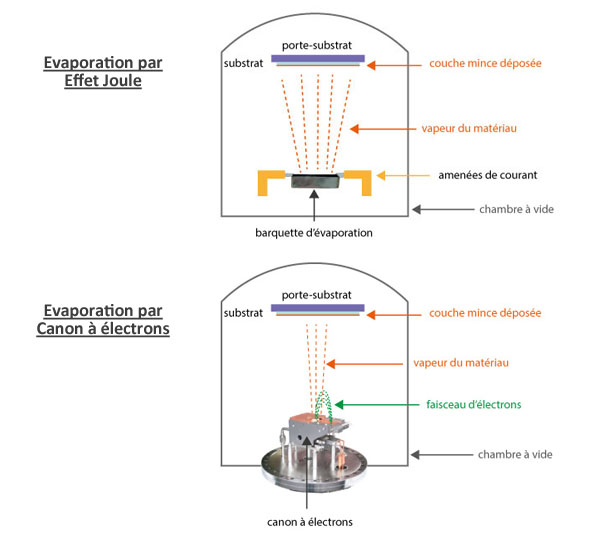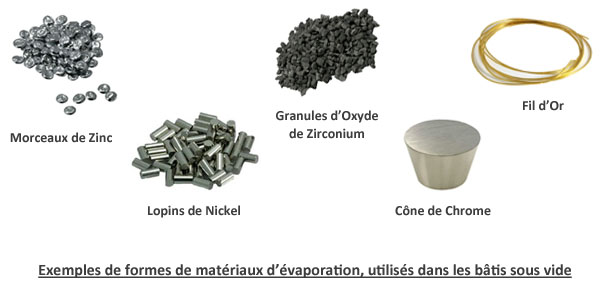Evaporation materials
Vacuum evaporation allows to produce vapors from several materials, to transport these vapors under a lowvacuum (pressure between 10-4 and 10-10 mbar) and to create thin film by deposition of these vapors on a substrate.
The evaporation under vacuum is based on two fundamental principles in thermodynamics :
- Sublimation of the material to deposit
- Condensation of the vapor when it hits the substrate
The material to deposit can be heated trough different ways:
- Joule Effect (thermal) : use of electrical current through a resistance : filament, boat, basket, crucible.
- Electron Gun: the material is placed into a copper crucible heated with an electron beam emitted by a tungsten filament and orientated thanks to a permanent magnet.
- Molecular beam epitaxy (MBE), very thin and organized layers thanks to an effusion source in UHV and XHV.

Evaporation materials can have several shapes such as pieces, pellets, granules, cones, powders, wires....

_1673427121.png)